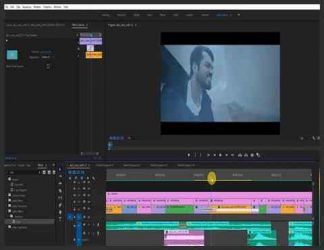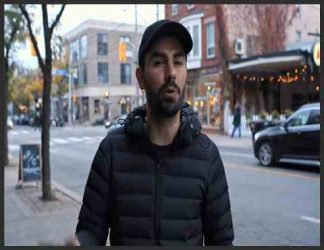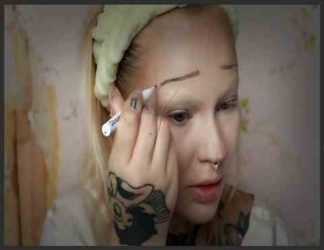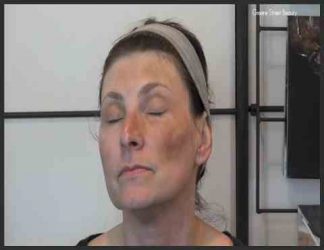You must need to login..!
توضیح
نورپردازی در فضای باز با Jerry Ghionis
برای دانلود رایگان نورپردازی در فضای باز با Jerry Ghionis با کیفیت full hd 1080p از پلیر سایت یا لینک زیر استفاده کنین
لینک دانلود link download
منابع روشنایی دیگر
کار با بازتاب آسان است – می توانید تأثیرات آن را بلافاصله و دقیقاً در هر لحظه قضاوت کنید. اما برای یک بازتابنده ، شما به طور عملی باید یک دستیار همراه خود داشته باشید تا آن را نگه دارید و آن را در صورت لزوم بچرخانید. اما هنوز هم: بازتابنده ها ارزان ، مؤثر و صرفاً مقرون به صرفه هستند.
اگر خورشید نمی درخشد ، یا می خواهید نور پیچیده تری را امتحان کنید ، باید به منبع نور خود مراجعه کنید. این بدان معناست که یا فلاش استودیویی (و با آن ، یا ژنراتور یا باتری ویژه) یا یک فلاش خارجی معمولی ، نوعی که معمولاً در یک کفش گرم دوربین قرار داده شده است ، اما در اینجا می توانید آن را در خارج از دوربین استفاده کنید.
یک فلاش قدرتمند می تواند حتی جای نور خورشید را بگیرد. و همچنین ، حتی از این فلاش های کوچکتر می توان برای جلوه های پیچیده مانند ایجاد “خورشید” خود استفاده کرد.
شما ممکن است در حال حاضر دارای یک فلاش خارجی باشید ، بنابراین برای شما تنها سؤال این خواهد بود که چگونه آن را از راه دور عکاسی کنید. بسیاری از مدل های نیکون وجود دارند که می توانند این کار را انجام دهند. اما برای مارک های دیگر یا برای اطمینان بیشتر ، می توانید یک سیستم رادیویی را برای عکاسی از راه دور فلش خریداری کنید. بسیاری از این موارد در خارج وجود دارد ، و هر یک توانایی های کمی متفاوت از موارد دیگر دارند.
با این حال ، مسیر مبتنی بر فلاش در مقایسه با بازتابنده موارد را کمی پیچیده می کند. به این ترتیب تا زمان عکس گرفتن نمی توانید تأثیر نور را ببینید و میزان نور شما نسبت به خورشید نسبتاً کم است ، که می تواند بسیار محدود کننده باشد. همچنین بسته به انتخاب دوربین فلاش و آتش ، احتمالاً مجبور خواهید بود میزان نوردهی را در حدود 1/160 ثانیه حفظ کنید. یا طولانی تر (توضیح این موضوع یک بار دیگر برای یک مقاله کامل دیگر مهم است.) بنابراین در بعضی موارد ، شما ممکن است یک سه پایه بخواهید.
Other Lighting Sources
Work with a reflector is easy—you can judge its effects immediately and precisely at any moment. But for a reflector, you practically have to have an assistant with you to hold it and turn it as needed. But still: reflectors are cheap, effective, and just plain cost-effective.
If the sun isn’t shining, or you want to try more complex lighting, then you will have to turn to your own light source. That means either a studio flash (and with it, either a generator or a special battery) or an ordinary external flash, the type normally inserted into a camera hot shoe, but here you’ll be using it outside the camera.
A powerful flash can “outshine” even the sun; meanwhile, external flashes are small and easily portable. And also, even these smaller flashes can be used for complex effects such as creating your own “sun,” as you can see from the pictures below. I prefer the second method, because it’s practical, and it lets me experiment.
You may already own an external flash, and so for you the only question will be how to fire it remotely. There are lots of Nikon bodies that can do this. But for other brands, or for more reliability, you can buy a radio system for remote flash firing. There are lots of these out there, and each has slightly different abilities than the next. Covering them all would be worth an article of its own. (If you’re interested, say so in the comments.) But for experimenting, you can still make do with a cheap Chinese flash firer.
However, the flash-based route does complicate things a bit compared to a reflector. This way you can’t see the effect of the light until you take the picture, and your light output relative to the sun is relatively low, which can be rather limiting. Also, depending on your choice of camera and flash firer, you will probably have to keep the exposure at about 1/160 sec. or longer. (Explaining this would once again be a matter for a whole other article.) Thus in some cases, you may want a tripod.















